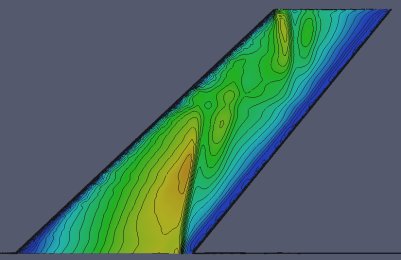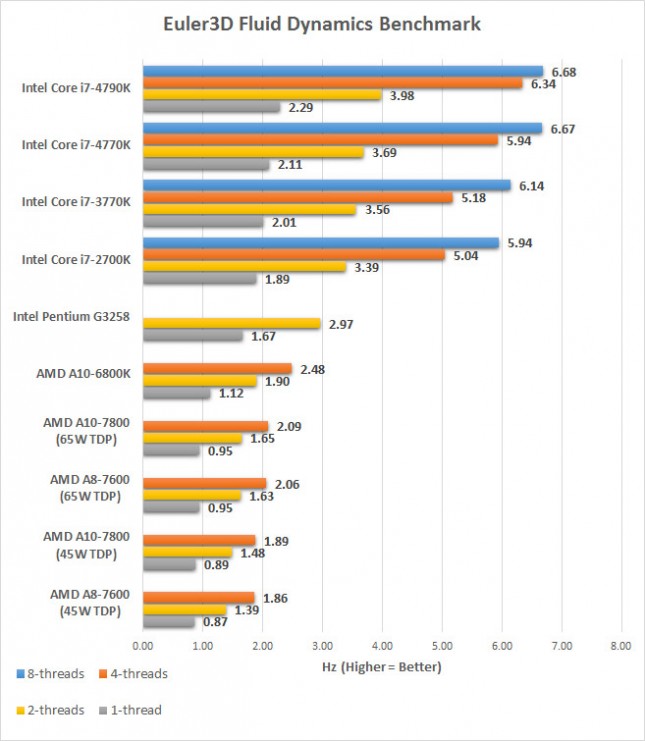AMD Kaveri A8-7600 and A10-7800 APU Review
Euler3d CFD Benchmark
Next up is the STARS Euler3d CFD benchmark. The benchmark is intended to provide information about the relative speed of different processor, operating system, and compiler combinations for a multi-threaded, floating point, computationally intensive CFD code. The benchmark testcase is the AGARD 445.6 aeroelastic test wing. The wing uses a NACA 65A004 airfoil section and has a panel aspect ratio of 1.65, a taper ratio of 0.66, and a 45 degree quarter-chord sweep angle. This AGARD wing was tested at the NASA Langley Research Center in the 16-foot Transonic Dynamics Tunnel and is a standard aeroelastic test case used for validation of unsteady, compressible CFD codes.

The benchmark CFD grid contains 1.23 million tetrahedral elements and 223 thousand nodes. The benchmark executable advances the Mach 0.50 AGARD flow solution. The Intel Fortran compiler (ifort 10.0) is used and all floating point variables are Fortran’s double precision (8 bytes). Parallelization is through OpenMP. The benchmark score is reported as a CFD cycle frequency in Hertz and that is what we used to make out chart.

Benchmark Results: When it comes to a really tough compute workload like the Euler3D Fluid Dynamics benchmark we can see that AMD is still lagging behind the competition by a good amount. The Intel Pentium G3258 dual-core processor scores much better with its two cores versus the four cores available on the AMD A10-7800 and A8-7600 quad-core APUs and it actually costs less.
